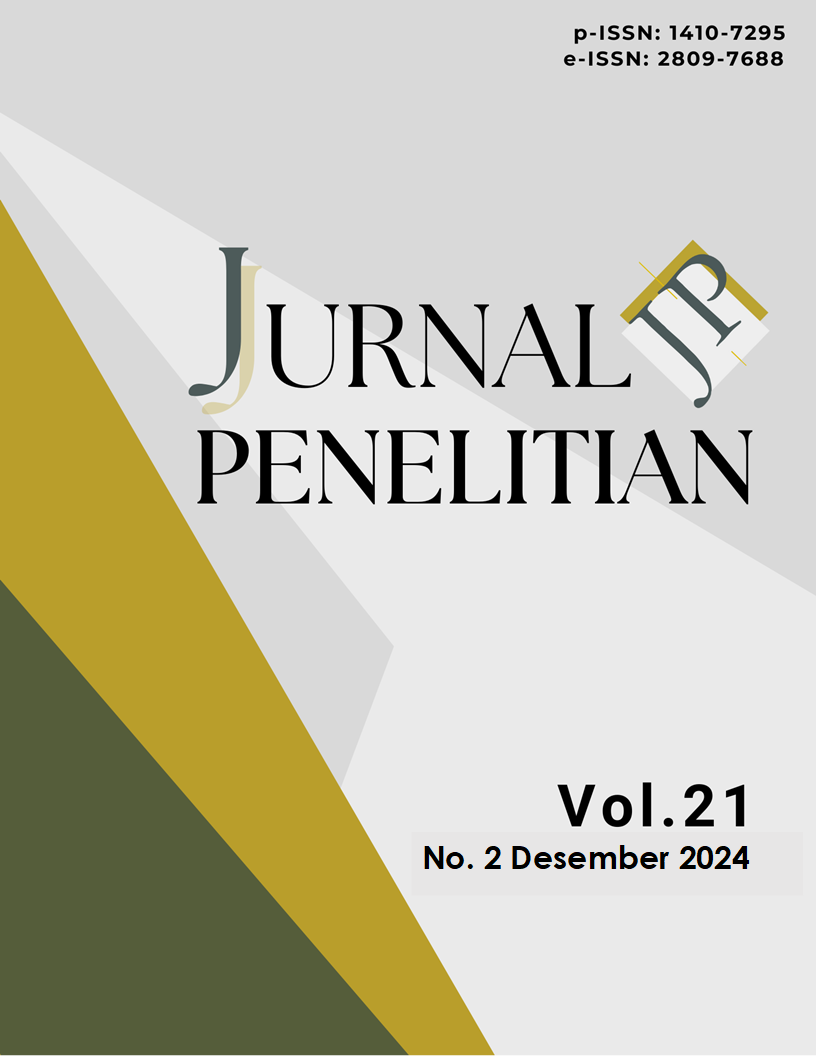The Impact of Emotional Appeal, Workplace Environment and Social Responsibility on Students' Sense of Belonging in Higher Education Institutions
DOI:
https://doi.org/10.26905/jp.v21i2.15696Keywords:
Emotional Appeal, Social Responsibility, Sense of Belonging, Workplace EnvironmentAbstract
Amid the wave of rapid technological advancement and intense competition in the world of education, higher education institutions are not only required to provide quality academic services but also to build strong emotional bonds with students. Sense of belonging becomes the main indicator that influences learning motivation, academic satisfaction, and student loyalty to their alma mater. This study uses an explanatory research design with a sample of 120 students taken through the accidental sampling technique. Data were collected using a questionnaire that had undergone validity and reliability tests and then analysed using descriptive statistics and multiple linear regression. The research results show that emotional appeal, workplace environment, and social responsibility have a significantly positive impact on students' sense of belonging. The workplace environment has the most dominant influence, emphasising the importance of a comfortable and supportive campus environment, while emotional appeal strengthens the affective bond, and the factor of social responsibility can enhance students' pride and sense of ownership towards the higher education institution. These three factors together build a meaningful and sustainable sense of belonging for students. Therefore, higher education institutions are expected to strategically integrate all three to enhance student engagement while also strengthening academic experience, retention, and institutional competitiveness, and fostering long-term commitment to their alma mater.
Downloads
References
Abell, P., North, D. C., Alt, J. E., & Shepsle, K. A. (1992). Institutions, Institutional Change and Economic Performance. The British Journal of Sociology. https://doi.org/10.2307/591470
Branscombe, N. R., Schmitt, M. T., & Harvey, R. D. (1999). Perceiving pervasive discrimination among African Americans: Implications for group identification and well-being. Journal of Personality and Social Psychology. https://doi.org/10.1037/0022-3514.77.1.135
Carroll, A. B. (1991). The pyramid of corporate social responsibility: Toward the moral management of organizational stakeholders. Business Horizons. https://doi.org/10.1016/0007-6813(91)90005-G
Dariyo, A. (2003). Psikologi perkembangan dewasa muda. Jakarta: Grasindo.
Ferdinand, A. (2014). Metode Penelitian Manajemen: Pedoman Penelitian Untuk Penulisan Skripsi,Tesis Dan Disertasi Ilmu Manajemen. Edisi kelima. Badan Penerbit Universitas Diponegoro.
Fombrun, C. J. (1996). Reputation: Realizing value from the corporate image. Harvard Business School.
Freire, C., Gonçalves, J., & Carvalho, M. R. (2022). Corporate social responsibility: the impact of employees’ perceptions on organizational citizenship behavior through organizational identification. Administrative Sciences, 12(3), 120.
Hafeez, I., Yingjun, Z., Hafeez, S., Mansoor, R., & Rehman, K. U. (2019). Impact of workplace environment on employee performance: mediating role of employee health. Business, Management and Economics Engineering, 17(2), 173–193.
Halbesleben, J. R. B., & Wheeler, A. R. (2008). The relative roles of engagement and embeddedness in predicting job performance and intention to leave. Work and Stress. https://doi.org/10.1080/02678370802383962
Harter, J. K., Schmidt, F. L., & Keyes, C. L. M. (2004). Well-being in the workplace and its relationship to business outcomes: A review of the Gallup studies. In Flourishing: Positive psychology and the life well-lived. https://doi.org/10.1037/10594-009
Kahn, W. A. (1990). Psychological conditions of personal engagement and disengagement at work. Academy of Management Journal. https://doi.org/10.5465/256287
Mael, F., & Ashforth, B. E. (1992). Alumni and their alma mater: A partial test of the reformulated model of organizational identification. Journal of Organizational Behavior. https://doi.org/10.1002/job.4030130202
Miles, M. P., & Covin, J. G. (2000). Environmental marketing: A source of reputational, competitive, and financial advantage. Journal of Business Ethics. https://doi.org/10.1023/A:1006214509281
Muhadi, S. (2016). PENGARUH PROGRAM EMPLOYEE RELATIONS TERHADAP SENSE OF BELONGING KARYAWAN UNIVERSITAS MERCU BUANA. Universitas Mercu Buana.
North, D. C. (1990). Institutions, Institutional Change and Economic Performance. In Institutions, Institutional Change and Economic Performance. https://doi.org/10.1017/cbo9780511808678
Oliver, R. L. (2014). Satisfaction: A behavioral perspective on the consumer, Second edition. In Satisfaction: A Behavioral Perspective on the Consumer, Second Edition. https://doi.org/10.4324/9781315700892
Regester, M., & Larkin, J. (2005). Risk Issues and Crisis Management: A Casebook of Best Practice. In The Public Relations Handbook.
Schmitt, B., Joško Brakus, J., & Zarantonello, L. (2015). From experiential psychology to consumer experience. Journal of Consumer Psychology. https://doi.org/10.1016/j.jcps.2014.09.001
Strayhorn, T. L. (2012). College Students’ Sense of Belonging: A Key to Educational Success for All Students. In College Students’ Sense of Belonging: A Key to Educational Success for All Students. https://doi.org/10.4324/9780203118924
Sugiono, P. D. (2014). Metode penelitian pendidikan pendekatan kuantitatif.pdf. In Metode Penelitian Pendidikan Pendekatan Kuantitatif, Kualitatif Dan R&D.
Suta, I. (2006). Kinerja Pasar Perusahaan Publik di Indonesia: Suatu Analisis Reputasi Perusahaan. (No Title).
Suta, I. P. G. A. (2005). Kinerja pasar perusahaan publik di Indonesia: Suatu analisis reputasi perusahaan. Universitas Indonesia.
Thomas, L. (2012). Building Student Engagement And Belonging In Higher Education At A Time Of Change: Final Report from the What Works? Student Retention and Success programme. In Higher Education Academy.
Turker, D. (2009). Measuring corporate social responsibility: A scale development study. Journal of Business Ethics. https://doi.org/10.1007/s10551-008-9780-6
Turner, M. M. (2012). Using emotional appeals in health messages. Health Communication Message Design. Thousand Oaks: Sage Publications, Inc, 59–73.
Wahidin, A. N., & Salwah, S. (2020). PENGARUH RISILIENSI TERHADAP PRESTASI BELAJAR MAHASISWA. Pedagogy: Jurnal Pendidikan Matematika. https://doi.org/10.30605/pedagogy.v5i1.267
Walton, G. M., & Cohen, G. L. (2011). A brief social-belonging intervention improves academic and health outcomes of minority students. Science. https://doi.org/10.1126/science.1198364
Downloads
Published
How to Cite
Issue
Section
License
Copyright (c) 2025 Jurnal Penelitian

This work is licensed under a Creative Commons Attribution-ShareAlike 4.0 International License.
Authors who publish in this journal agree to the following terms:
- Copyright of the published articles will be transferred to the journal as the publisher of the manuscripts. Therefore, the author confirms that the journal has managed the copyright.
- Publisher of Abdimas: Jurnal Pengabdian Masyarakat Universitas Merdeka Malang is University of Merdeka Malang.
- The copyright follows the Creative Commons Attribution-ShareAlike License (CC BY SA): This license allows to share, copy, and redistribute the material in any medium or format, adapt, remix, transform, and build upon the material, for any purpose, even commercially.


